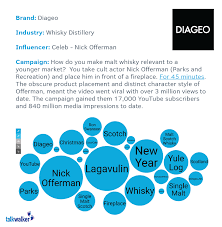
It was more than a gimmick. In the late 1950s, it was a major event in the television industry. This was when the Golden Age of television was in full swing, and the biggest broadcast networks were raking in the dough from their sponsored programs. Not to mention that they were making their own commercials.
Actually, the first TV commercial with color was an ad for the first alcohol brand to advertise on TV. Actually, they were all released simultaneously. One of these ads is now in the Guinness Book of World Records.
The advent of color television set was not possible until the mid-1960s. Advertisers were now able to pick the shows they want to promote and could buy time to do it. Advertisers were able to have their commercials seen by millions. However, there were limitations. For example, only NBC had live color cameras, and only a few stations had color equipment.

The most ridiculous of all, however, was that the first color television commercial actually came from RCA. Although it was a rerun, it still managed the attention it deserved. After all, a television that can show up to a million colors was a pretty big deal at the time. Major networks were making a lot and it seemed like the best way for them to be remembered was to showcase the latest technologies.
While the ad was only 10 seconds long, it was the most expensive and longest color TV commercial ever produced. But, it was less expensive than today's. It's no surprise that it was a huge success.
Similarly, the first color television commercial that was actually aired was a small clip on Philadelphia's Color Television channel. The advertisement was actually a series, which was a technological innovation for broadcast mediums.
In the same year that the ad was published, the first ever real color television set was placed in a Columbus, Ohio home. In Ohio, the first Wendy's hamburger place opened. The "Piano Recital", a McDonald's advertisement, was another important ad. These advertisements, along with the Coors Light ads "At the Silver Bullet", "At the sexy hour" were very popular. These ads became so popular that the companies that made them were forced to produce their own versions. Some even modified the ads to better fit their needs.

The first TV commercial in color was not the end-all and be all of television. However, it was a significant milestone in the history of the television medium, and the public was only a few years away from catching up. Advertising agencies found the new color technology a boon, as they were able to use it to create their campaigns.
FAQ
What do you need to know about print advertising?
Print advertising is an effective medium for communicating with consumers. Print advertising is used extensively by companies to promote their products or services. The goal is to get the consumer's attention.
Print ads are usually one-page long. They contain text, images, logos, and any other graphics. Print ads can also contain sound, animation, videos, and hyperlinks.
Here are the main types and classifications of print advertising:
1. Brochures - Large format printed brochures are used to draw people in to stores. They are often filled with colorful images and catchy designs.
2. Catalogues are smaller versions than brochures. These are typically sent to customers who ask for specific information.
3. Flyers – These are tiny pieces of paper distributed at events like concerts or fairs. They can be given at retail outlets but must be paid for.
4. Flyers are also available in posters. They are displayed on walls, fences, and buildings. They are typically created using computer software programs that aim to attract the attention of passersby.
5. Direct mail – This is a direct mailing of letters or postcards directly to customers. These are sent periodically by companies to remind current customers about their business.
6. Newspaper Ads - These are placed in newspapers and magazines. They are usually quite long and contain both text and images.
What is an advertising campaign?
Advertising campaigns are a series or advertisements that promote a product. It may also refer to the entire production of such ads.
"Ad" is a Latin word that means "to sell." Marcus Terentius Varro (116–27 BC) was the first person to use it. It meant "to sell".
Advertising campaigns are usually done by large companies and agencies. There may be many media types involved, including print and television as well as radio, TV, and internet.
Advertising campaigns are typically long-lasting and have clear goals. Some campaigns are designed to increase awareness, while others aim to increase sales.
Is there a way for me to get free traffic?
Refers to traffic that comes from organic search results, without the need for advertising. This traffic is known as natural or organic traffic. There are many ways to get free traffic, such as article marketing, social media marketing, blogging, etc.
Article Marketing is one way to get free traffic. Paying for ads is often more expensive than CPC. Article marketing can also be referred to content marketing.
Social Media Marketing - Social media sites like Facebook, Twitter, and LinkedIn allow you to promote your business through advertising. These platforms are great for sharing updates, sharing photos, and building relationships with potential clients. Many businesses choose to buy ad space in social media because they want a wider reach at a reduced price.
Blogging - Another great way to generate traffic is blogging. You'll attract visitors if you write quality content that people enjoy reading. After you attract visitors to your blog, you can make money by selling products or other services.
Email Marketing - Although email marketing has been around since before the advent of the Internet it is still one of the most effective ways to drive traffic and sales to your site. You can grow your list and eventually sell to subscribers by sending them emails frequently.
What is advertising's primary purpose?
Advertising is not just about selling products; it's also about creating an emotional connection between you and your customers.
Advertising is about communicating ideas and values to people who are already interested in what you have to offer. It is about changing attitudes and minds. It's also about creating relationships.
It's all a matter of making people feel good.
You can't sell to your customers if you don’t know their needs.
It is essential to first understand the needs and purchasing habits of your customer before you embark on any advertising project.
You can then design ads that resonate with them.
What should you know about radio advertising
Understanding the interactions between different media is essential. Remember that media can complement each other and are not necessarily competitive.
Radio is best utilized as an extension to TV advertising. It can reinforce key messages and provide additional information.
Radio listeners are often not able to handle long TV commercials. Radio ads are often shorter and cheaper.
Advertising what is it?
Advertising is an art. It's not just about selling products. It's about building emotional bonds between brands and people.
Advertising is about storytelling and using images to communicate ideas.
Communicating clearly and persuasively is key. It is important to share a story that appeals to your target audience.
This makes advertising different from other forms of communication, such as public speaking, writing, or presentations.
When you create a winning ad campaign, it is creating your brand identity.
This is how to be remembered. People want to remember you.
How do I choose my target market?
Start with yourself and those closest to your heart. If you don’t know where or how to start, ask yourself "Whom are I trying to reach?"
Ask yourself these questions: Who are the most influential people in my industry? What problems do they have to deal with every day? Which are the smartest people working in my field? They hang out online.
Return to the beginning. What motivated you to start your business? What was your problem and how did it solve?
These questions will enable you to identify your ideal client. Learn more about them and why they choose to do business with you.
For clues on who your competitors cater to, check out their websites and social media pages.
Once you have identified your target customers you will need to choose the channel to reach them. For example, if your company provides services to real estate agents, you might create an informational website targeting home buyers.
A blog that targets small-business owners could be a possibility if you are a software provider.
A Facebook page could be created for clothing sellers. For parents who are looking for child-friendly restaurants, you might set up your own Twitter account.
It is important to remember that there are many methods of getting your message across.
Statistics
- Nonetheless, advertising spending as a share of GDP was slightly lower – about 2.4 percent. (en.wikipedia.org)
- Worldwide spending on advertising in 2015 amounted to an estimated US$529.43 billion. (en.wikipedia.org)
- In 1919 it was 2.5 percent of gross domestic product (GDP) in the US, and it averaged 2.2 percent of GDP between then and at least 2007, though it may have declined dramatically since the Great Recession. (en.wikipedia.org)
- Google will display whichever ad type (CPM or CPC) is expected to earn more revenue for the publisher, which is in Google's best interest since they take a 32% share of the revenue. (quicksprout.com)
External Links
How To
How to run paid ads
Paid advertising can be defined as any marketing activity in which you pay money. This could include buying ad space on websites, placing advertisements in newspapers or magazines, or paying someone to promote your business online. There are many forms of paid advertising. These include social media marketing, email marketing and display advertising.
You need to know the cost of your campaign and the expected results. This will ensure that it runs smoothly. You need to assess whether the ROI (return on investment) is sufficient to justify the cost.
Before you launch a paid campaign for advertising, you must first establish if potential customers are interested in your product or services. You can start by sharing your message via social media, posting flyers and making announcements in your local area.
Once you have identified your target audience, it is possible to decide which way to reach them. Advertise in local newspapers if you are selling organic foods. Advertising on TV and radio is another option if you are selling cosmetics.
Once you have decided on the person you want to reach, figure out what you can spend. There are many methods to calculate your budget. You can divide your budget into daily, weekly and monthly amounts. To make it easier, you can use a spreadsheet program.